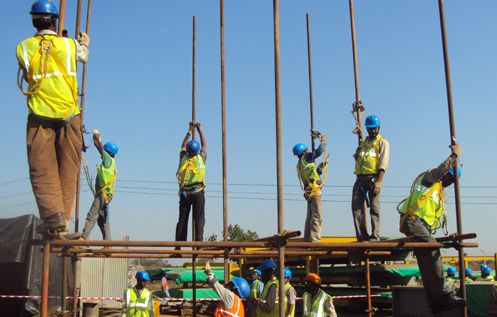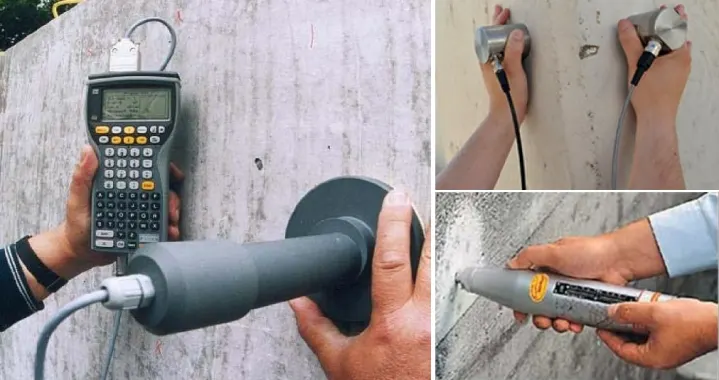Mason Form Finished & Special Concrete ( 6 month course)
Mason Form Finished & Special Concrete click here
Mason Form Finished & Special Concrete: The job role is responsible for carrying out
concreting on form finished and complex structures.
Brief Job Description: The job role is responsible for placing, levelling and finishing
concrete, in form finished concrete structures, complex structure and in extreme
weather conditions.
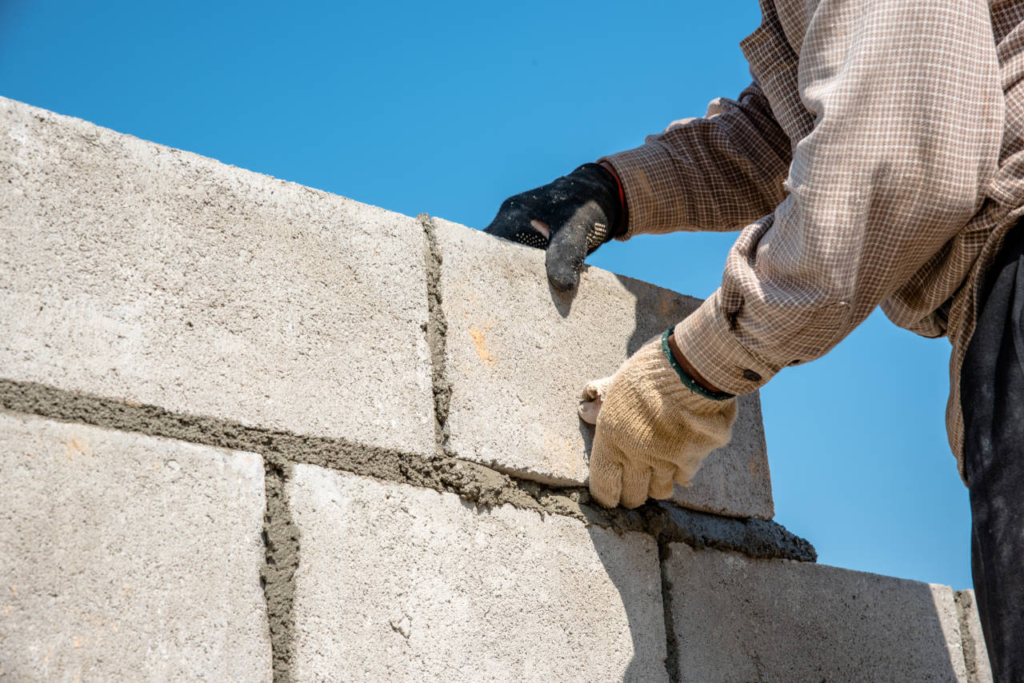
Personal Attributes: The individual is expected to be physically fit and should be able to
work across various locations in extreme weather conditions while working at the site.
The person must be able to work within a team and handle the various concreting tools
and materials with independent decision making ability.
Description
Sector Sector is conglomeration of different business operations having similar
business and interests. It may also be defined as a distinct subset of the
economy whose components share similar characteristics and interests.
Sub-Sector Sub-Sector is derived from a further breakdown based on the characteristics and
interests of its components
Occupation Occupation is a set of job roles, which perform similar/related set of
functions in an industry
Job role Job role defines a unique set of functions that together form a unique
employment opportunity in an organization.
Occupational Standards
(OS)
OS specify the standards of performance an individual must achieve when
carrying out a function in the workplace, together with the knowledge and
understanding they need to meet the standard consistently. Occupational
Standards are applicable both in the Indian contexts.
Performance Criteria Performance Criteria are statements that together specify the standard of
performance required when carrying out a task.
Qualifications Pack (QP) Qualifications Pack comprises the set of OS, together with the educational,
training and other criteria required to perform a job role. A Qualification Pack is
assigned a unique qualification pack code
Qualification Pack Code Qualification Pack Code is a unique reference code that identifies a
qualifications pack.
National Occupational
Standards (NOS) NOS are Occupational Standards which apply uniquely in the Indian context.
Scope Scope is the set of statements specifying the range of variables that an
individual may have to deal with in carrying out the function which have a critical
impact on the quality of performance required.
Knowledge and Understanding
Knowledge and Understanding are statements which together specify the
technical, generic, professional and organizational specific knowledge that an
individual needs in order to perform to the required standard
Organizational Context Organizational Context includes the way the organization is structured and how
it operates, including the extent of operative knowledge managers have of their
relevant areas of responsibility.
Technical Knowledge Technical Knowledge is the specific knowledge needed to accomplish specific
designated responsibilities.
Core Skills / Generic Skills Core Skills or Generic Skills are a group of skills that are key to learning and
working in today’s world. These skills are typically needed in any work
environment. In the context of the OS, these include communication related
skills that are applicable to most job roles.
Keywords /Terms Description
CON Construction
NSQF National Skill Qualifications Framework
QP Qualification Pack
OS Occupational Standards
TBD To Be Decided
Place, level and finish concrete for form finished concrete structures and work with
self – compacting concrete.

Description
This unit describes the skills and knowledge required to place, level and finish
concrete for form finished concrete structures and work with self – compacting
concrete.
Scope
The scope covers the following:
Read & interpret specifications, standards and GFC drawings relevant to
concreting works
Carry out preparatory works for form finished concrete structures
Place, level and finish concrete for form finished concrete structures
Carry out concreting with self – compacting concrete (SCC) in situ
Performance Criteria (PC) w.r.t. the Scope
Element Performance Criteria
Read & interpret specifications, standards and GFC drawings relevant to concreting works
To be competent, the user / individual on the job must be able to:
PC1. read and interpret details & specifications provided in relevant structural drawings
PC2. read and understand method statement for concreting of form finished structure
PC3. read and understand schedule of concrete pour
Carry out preparatory works for form finished concrete structures
PC4. perform visual checks to ensure safe condition of access and sufficient
work space around concrete pouring point
PC5. check and ensure formwork is clean prior to commencement of work
PC6. point out any misalignment in formwork/reinforcement prior to pour
PC7. check that cover blocks are adequately provided
PC8. check that release agents is applied evenly and is not coming into contact
with reinforcement, pre-stressing tendons and anchorages
PC9. in case of contamination due to release agents, ensure it is removed prior
to placing of concrete
PC10. visually assess the workability and usability of concrete
Place, level and finish concrete for form finished concrete structures
PC11. adhere to method statement and scheduled time line for concreting activity
PC12. ensure concrete is poured in specified layers
PC13. ensure concrete pour is continuous and uninterrupted
PC14. ensure placing ,leveling & compaction activities take place in a synchronized
manner w.r.t the rate of pour
PC15. maintain correct vibration depth and ensure that the previous layer is not
affected during vibration
PC16. maintain sufficient and uniform compaction of concrete with efficient use
of equipment to avoid air voids
PC17. avoid over vibration and formation of laitance and cold joints
PC18. work efficiently considering the setting time of concrete while pouring and
ensure pouring takes place within specified time
PC19. re-vibrate the top of a vertical pour after specified time to eliminate color
banding at top
PC20. provide construction joints as per specification
PC21. carry out remedial work by patching tie holes as per specification & as per
requirement
PC22. use sealant efficiently to improve weathering/maintenance as per
requirement
Carry out concreting with self – compacting concrete (SCC) in situ
PC23. pour the self – compacting concrete (SCC) at a fast rate to avoid setting
PC24. pour the SCC from a specified height to avoid air to be entrained
PC25. ensure sealing of forms after pouring
Knowledge and Understanding (K)
A. Organizational
Context
(Knowledge of
the company /
organization and
its processes)
The user/individual on the job needs to know and understand:
KA1. standard practices for masonry concreting works
KA2. safety rules and regulations for handling and storing required tools,
equipment and materials related to masonry works
KA3. personal protection including the use of related safety gears & equipment
KA4. how to request for tools and materials as per set procedures
KA5. maintenance of tools and equipment
B. Technical
Knowledge
The user/individual on the job needs to know and understand:
KB1. standard sizes of all masonry concreting tools
KB2. basic principles of measurement
KB3. how to provide cover as per size of reinforcement bars
KB4. basic properties of concrete

KB5. different grades of concrete and nominal mixes
KB6. different type of high quality concrete finish
KB7. sequence of pouring process
KB8. variation of slump w.r.t rate of pour
KB9. whether or not the concrete requires compaction
KB10. different type of vibrators used(internal/external vibrators)
KB11. accessibility of vibrators and their influence area
KB12. appropriate technique for vibrating of concrete
KB13. vibration in congested areas
KB14. knowledge of construction joints
KB15. cold joints in concrete and ways to avoid them
KB16. appropriate technique and extent to which control joints must be cut
KB17. avoiding color banding and junction cracks in concrete
KB18. technique for patching tie holes
KB19. curing technique of form finished concrete
KB20. various applications and uses of self – compact concrete
KB21. how to control the flow of concrete to maintain uniform layers
KB22. why the concrete is to be poured in layers of specified thickness
KB23. initial and final setting of concrete and their checking
KB24. correct positioning of the pump hose when pumping the SCC
Skills (S)
A. Core Skills/
Generic Skills
Writing Skills
The user/ individual on the job needs to know and understand how to:
SA1. write in one or more language, preferably in the local language of the site
Reading Skills
The user/ individual on the job needs to know and understand how to:
SA2. read in one or more language, preferably in the local language of the site
SA3. read instructions, guidelines, sign boards, safety rules and safety tags at the
construction site
SA4. read instructions related to exit routes during emergency
Oral Communication (Listening and Speaking skills)
The user/ individual on the job needs to know and understand how to:
SA5. speak in one or more language, preferably in one of the local languages of
the site
SA6. listen and follow instructions given by supervisor
SA7. orally and effectively communicate with team members
B. Professional
Skills
Decision Making
The user/individual on the job needs to know and understand how to:
SB1. decide whether the work place is safe for working and also relevant task is
not creating hazardous condition for others
SB2. decide whether work is adequately defined for the day , work front is clear
and adequate materials and tools are available for performing work
SB3. decide the sequence of pouring process
Plan and Organize
The user/individual on the job needs to know and understand how to:
SB4. plan work & organize required resource in coordination with team members
and superior
SB5. plan for visual checking of overall concreting work
Customer centricity
The user/individual on the job needs to know and understand how to:
SB6. complete work as per agreed time schedule and quality
SB7. ensure acceptance of quality of form finished and special concrete work for
complex structures by immediate superior
SB8. ensure satisfaction for level of productivity under given site condition
Problem solving
The user/individual on the job needs to know and understand how to:
SB9. resolve and solve any conflict within the team
SB10. assess quantity and quality of materials for day work
SB11. check for quality of scaffolding/working platform from all aspects of safety
SB12. dispose of construction debris & keep workplace safe and tidy for working
SB13. ensure uniform compaction of concrete
Analytical Thinking
The user/individual on the job needs to know and understand how to:
SB14. optimize resources efficiently
SB15.minimize wastage in the workplace
SB16.start and finish levels for day work
SB17.reconcile material consumption
SB18. analyze the workability of finished concrete
Critical Thinking
The user/individual on the job needs to know and understand how to:
SB19.evaluate the complexity of the task and seek assistance and support
wherever required
SB20.bring to the notice of the superiors any requirement of the requisite material
and resources
SB21.bring to the notice of the superiors violation of any safety norms which may
lead to accidents
SB22.point out misalignments in formwork/reinforcement prior to pour
Carry out concreting in extreme environment as per requirement
Description
This unit describes the skills and knowledge required to carry out concreting in
extreme environment as per requirement.
Scope
This scope covers the following:
Carry out concrete pouring and curing at extremely cold temperatures
Carry out concrete pouring and curing at extremely hot temperatures
Performance Criteria (PC) w.r.t. the Scope
Element Performance Criteria
Carry out concrete pouring and curing at extremely cold temperatures
To be competent, the user / individual on the job must be able to:
PC1. read & interpret specifications, standards and GFC drawing for relevant
work ensure use of windproof and weather proof heated enclosures for
placing concrete

PC2. visually check the workability and usability of concrete
PC3. ensure preparation of concrete mix as per specified slump with minimal
water cement ratio by using appropriate admixtures for decreasing setting
time on cold surfaces
PC4. cover the finished concrete with curing / insulation blankets as per
requirement
PC5. monitor curing using live steam/liquid membrane forming compound for
early curing as per specification or as per applicability
PC6. ensure gradual cooling of concrete to limit rapid temperature changes in
concrete & to prevent thermal cracking
Carry out concrete pouring and curing at extremely hot temperatures
PC7. moisten the surface receiving concrete, steel reinforcement and form work
prior to concrete placement
PC8. ensure usage of sunshades or windbreaks around the pour area to reduce
possible harsh conditions on concrete
PC9. visually check the workability and usability of concrete prior to concrete
pour
PC10. ensure concrete used is of specified consistency suitable for rapid
placement and consolidation
PC11. protect the concrete surface during placement using plastic sheet or
evaporative retarder to maintain moisture in concrete mixture
PC12. work efficiently considering the rapid setting of concrete during hot
weather conditions
PC13. place the concrete with control joints spaced at specified intervals
PC14. ensure finished concrete is sufficiently moist during curing period
Knowledge and Understanding (K)
A. Organizational Context
(Knowledge of
the company /
organization and
its processes) The user/individual on the job needs to know and understand:
KA1. standard practices for concreting in extreme weather conditions
KA2. safety rules and regulations for handling and storing required tools,
equipment and materials related to concreting works
KA3. personal protection including the use of related safety gears & equipment
KA4. how to request for tools and materials as per set procedures
KA5. maintenance of tools and equipment
B. Technical
Knowledge
The user/individual on the job needs to know and understand:
KB1. how to read drawing and specifications related to concreting
KB2. principles of measurement
KB3. different grades of concrete and nominal mixes
KB4. different type of heater used for cold weather concreting
KB5. different type of vibrators used(internal/external vibrators)
KB6. accessibility of vibrators and their influence area
KB7. appropriate technique for vibrating of concrete
KB8. vibration in congested areas
KB9. uses and application of construction joints
KB10. cold joints in concrete and methodologies to avoid them
KB11. appropriate technique and extent to which control joints must be cut
KB12. types of hardening and sealing components to cure surfaces
KB13. type of finishes of concrete surfaces
KB14. how to screed the concrete to correct levels and grades
KB15. different types of concrete shrinkage
KB16. advantages of using pumping method of concrete pouring
KB17. major risks associated with hot and cold weather concrete pouring
KB18. wind breaks, wind velocity and their effect on concrete
KB19. delayed finishing and early curing in concreting
KB20. methods to supply moisture to concrete surface
Skills (S)
A. Core Skills/
Generic Skills
Writing Skills
The user/ individual on the job needs to know and understand how to:
SA1. write in one or more language, preferably in the local language of the site
Reading Skills
The user/ individual on the job needs to know and understand how to:
SA2. read in one or more language, preferably in the local language of the site
SA3. read instructions, guidelines, sign boards, safety rules and safety tags at the
construction site
SA4. read instructions related to exit routes during emergency
Oral Communication (Listening and Speaking skills)
The user/ individual on the job needs to know and understand how to:
SA5. speak in one or more language, preferably in one of the local languages of
the site
SA6. listen and follow instructions given by supervisor
SA7. orally and effectively communicate with team members
B. Professional Skills
Decision Making
The user/individual on the job needs to know and understand how to:
SB1. decide whether the work place is safe for working and also relevant task is
not creating hazardous condition for others
SB2. decide whether work is adequately defined for the day , work front is clear
and adequate materials and tools are available for performing work
SB3. decide the method of placing concrete with control joints with accurate
spacing
Plan and Organize
The user/individual on the job needs to know and understand how to:
SB4. plan work & organize required resource in coordination with team members
and superior
SB5. plan for cutting of control joints
Customer centricity
The user/individual on the job needs to know and understand how to:
SB6. complete work as per agreed time schedule and quality
SB7. ensure acceptance of quality of form finished and special concrete work for
complex structures by immediate superior
SB8. ensure satisfaction for level of productivity under given site condition
Problem solving
The user/individual on the job needs to know and understand how to:
SB9. resolve and solve any conflict within the team
SB10. assess quantity and quality of materials for day work
SB11. check for quality of scaffolding/working platform from all aspects of safety
SB12. dispose of construction debris & keep workplace safe and tidy for working
SB13. use a correct evaporative retarder on concrete
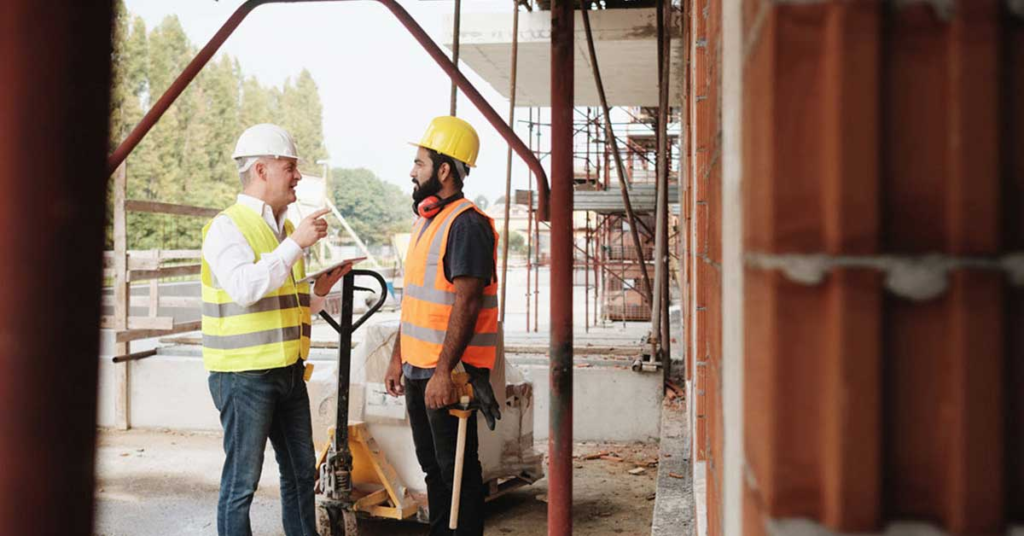
Analytical Thinking
The user/individual on the job needs to know and understand how to:
SB14. optimize resources efficiently
SB15.minimize wastage in the workplace
SB16.start and finish levels for day work
out concreting in extreme environment as per requirement
SB17.reconcile material consumption
SB18. ensure correct mixing of concrete for extreme temperatures
Critical Thinking
The user/individual on the job needs to know and understand how to:
SB19.evaluate the complexity of the task and seek assistance and support
wherever required
SB20. bring to the notice of the superiors any requirement of the requisite material
and resources
SB21. bring to the notice of the superiors violation of any safety norms which may
lead to accidents
SB22. prevent thermal cracking of concrete using correct measures
Carry out concreting on complex structures including slip form concreting
Description
This unit describes the skills and knowledge required to carry out concreting on complex
structures including slip form concreting.
Scope
This scope covers the following:
Carry out concreting on inclined surfaces with top and bottom shutters
Carry out concreting on complex shaped structures
Carry out slip form concreting
Performance Criteria (PC) w.r.t. the Scope
Element Performance Criteria
Carry out concreting on inclined surfaces with top and bottom shutters
To be competent, the user / individual on the job must be able to:
PC1. ensure slump of concrete is within specified limit
PC2. visually check the workability and usability of concrete prior to concrete pour
PC3. ensure uniform rate of pour of concrete
PC4. carry out rapid placement of concrete to avoid cold joints
PC5. ensure that concrete placement is to begin from lowest point of form and
proceed towards highest point
PC6. work effectively with the designed slump maintaining completion of entire
member prior to setting of concrete
PC7. maintain sufficient and uniform compaction of concrete with efficient use of
equipment to avoid air voids
PC8. carry out curing for specified length of time
Carry out concreting on complex shaped structures
PC9. ensure slump of concrete is within specified limit
PC10. visually check the workability and usability of concrete
PC11. ensure uniform rate of pour of concrete and carry out placement of concrete
in synchronized manner
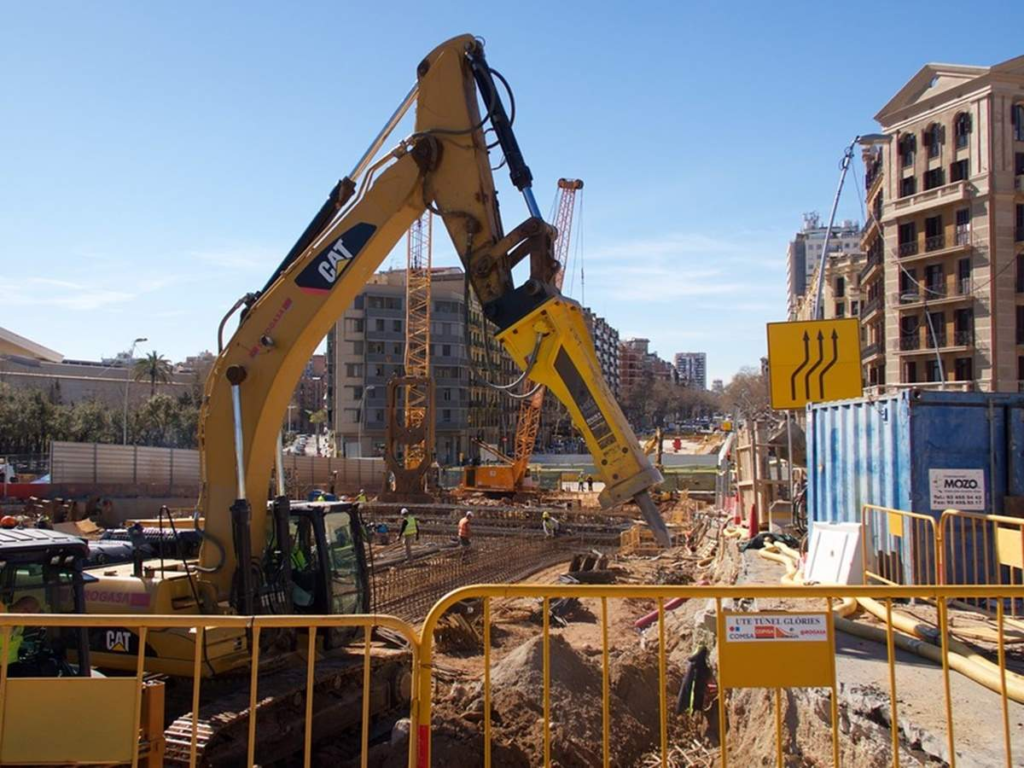
PC12. ensure that rate of placement of concrete is to be uniform to avoid cold joints
PC13. ensure that concrete placement is to begin from lowest point of form and
proceed towards highest point
PC14. ensure proper compaction of concrete using specified equipment
PC15. carry out curing for specified length of time
Carry out slip form concreting
PC16. carry out concrete pouring at a uniform rate
PC17. ensure placing of concrete in layers of uniform thickness
PC18. ensure proper compaction of concrete using specified equipment
PC19. ensure that rate of pour should be with respect to the speed of movement of slip form
Knowledge and Understanding (K)
A. Organizational Context (Knowledge of the company /organization and its processes)
The user/individual on the job needs to know and understand:
KA1. standard practices for handling form finished concrete
KA2. safety rules and regulations for handling and storing required tools, equipment
and materials related to masonry works
KA3. personal protection including the use of related safety gears & equipment
KA4. how to request for tools and materials as per set procedures
KA5. maintenance of tools and equipment
B. Technical Knowledge
The user/individual on the job needs to know and understand:
KB1. simple and complex technical drawings and principles relevant to concreting
works
KB2. principles of measurement
KB3. types of hardening and sealing components to cure surfaces
KB4. different type of vibrators used(internal/external vibrators)
KB5. accessibility of vibrators and their influence area
KB6. appropriate technique for vibrating of concrete
KB7. vibration in congested areas
KB8. cold joints in concrete and ways to avoid them
KB9. appropriate technique and extent to which control joints must be cut
KB10. types of hardening and sealing components to cure surfaces
KB11. type of finishes of concrete surfaces
KB12. how to screed the concrete to correct levels and grades
KB13. different types of concrete shrinkage
KB14. advantages of using pumping method of concrete pouring
KB15. concreting on inclined surface
KB16. proper curing of concrete
KB17. use of retarders
KB18. method of placement of concrete in case of inclined surfaces
KB19. method of placement of concrete in case of inclined surfaces and slip form
concreting
Skills (S)
A. Core Skills/
Generic Skills
Writing Skills
The user/ individual on the job needs to know and understand how to:
SA1. write in one or more language, preferably in the local language of the site
Reading Skills
The user/ individual on the job needs to know and understand how to:
SA2. read in one or more language, preferably in the local language of the site
SA3. read instructions, guidelines, sign boards, safety rules and safety tags at the
construction site
SA4. read instructions related to exit routes during emergency
Oral Communication (Listening and Speaking skills)
The user/ individual on the job needs to know and understand how to:
SA5. speak in one or more language, preferably in one of the local languages of the
site
SA6. listen and follow instructions given by supervisor
SA7. orally and effectively communicate with team members
B. Professional Skills
Decision Making
The user/individual on the job needs to know and understand how to:
SB1. decide whether the work place is safe for working and also relevant task is not
creating hazardous condition for others
SB2. decide whether work is adequately defined for the day , work front is clear and
adequate materials and tools are available for performing work
SB3. decide the method of placing concrete with control joints with accurate
spacing
Plan and Organize
The user/individual on the job needs to know and understand how to:
SB4. plan work & organize required resource in coordination with team members
and superior
SB5. plan for cutting of control joints
Customer centricity
The user/individual on the job needs to know and understand how to:
SB6. complete work as per agreed time schedule and quality
SB7. ensure acceptance of quality of form finished and special concrete work for
complex structures by immediate superior
SB8. ensure satisfaction for level of productivity under given site condition
Problem solving
The user/individual on the job needs to know and understand how to:
SB9. resolve and solve any conflict within the team
SB10. assess quantity and quality of materials for day work
SB11. check for quality of scaffolding/working platform from all aspects of safety
SB12. dispose of construction debris & keep workplace safe and tidy for working
SB13. ensure uniform rate of concrete pouring
Analytical Thinking
The user/individual on the job needs to know and understand how to:
SB14. optimize resources efficiently
SB15.minimize wastage in the workplace
SB16.start and finish levels for day work
SB17.reconcile material consumption
SB18. use correct rate of placement of concrete to be uniform to avoid cold joints
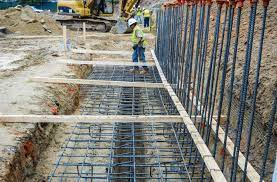
Critical Thinking
The user/individual on the job needs to know and understand how to:
SB19. evaluate the complexity of the task and seek assistance and support wherever
required
SB20. bring to the notice of the superiors any requirement of the requisite material
and resources
SB21. bring to the notice of the superiors violation of any safety norms which may
lead to accidents
Work effectively in a team to deliver desired results at the workplace
Description
This unit describes the skills and knowledge required to work effectively within a
team to achieve the desired results.
Scope
The scope covers the following:
Interact and communicate effectively with co-workers, superiors and subordinates across different teams
Support co-workers, superiors and sub-ordinates within the team and across
interfacing teams to ensure effective execution of assigned task
Performance Criteria (PC) w.r.t. the Scope
Element Performance Criteria
Interact and
communicate in
effective and
conclusive manner
To be competent, the user / individual on the job must be able to:
PC1. pass on work related information/ requirement clearly to the team
members
PC2. inform co-workers and superiors about any kind of deviations from work
PC3. address the problems effectively and report if required to immediate
supervisor appropriately
PC4. receive instructions clearly from superiors and respond effectively on the
same
PC5. communicate to team members/subordinates for appropriate work
technique and method
PC6. seek clarification and advice as per the requirement and applicability
Support co-workers
to execute project
requirements
PC7. hand over the required material, tools tackles, equipment and work fronts
timely to interfacing teams
PC8. work together with co-workers in a synchronized manner
Knowledge and Understanding (K)
A. Organizational
Context
(Knowledge of
the company /
organization and
its processes)
The user/individual on the job needs to know and understand:
KA1. own roles and responsibilities
KA2. importance of effective communication and establishing strong working
relationships with co-workers
KA3. risks of a failure in teamwork in terms of effects on project outcomes,
timelines, safety at the construction site, etc.
KA4. different modes of communication, and its appropriate usage
KA5. importance of creating healthy and cooperative work environment among
the gangs of workers
B. Technical
Knowledge
The user/individual on the job needs to know and understand:
KB1. different activities within his work area where an interaction with other
workers is required
KB2. applicable techniques of work, properties of materials used, tools and
tackles used, safety standards that co- workers might need as per the
requirement
KB3. importance of proper and effective communication and the expected
adverse effects in case of failure relating to quality, timelines, safety, risks at
the construction project site
KB4. importance and need of supporting co-workers facing problems for smooth
functioning of work
Skills (S)
A. Core Skills/
Generic Skills
Writing Skills
The user/ individual on the job needs to know and understand how to:
SA1. write in one or more languages, preferably in the local language of the site
Reading Skills
The user/ individual on the job needs to know and understand how to:
SA2. read in one or more languages, preferably in the local language of the site
SA3. read communication from team members regarding work completed,
materials used, tools and tackles used, support required
Oral Communication (Listening and Speaking skills)
The user/ individual on the job needs to know and understand how to:
SA4. speak in one or more languages, preferably in one of the local languages of
the site
SA5. listen and follow instructions / communication shared by superiors/ coworkers regarding team requirements or interfaces during work processes
SA6. orally communicate with co-workers regarding support required to complete
the respective work
B. Professional
Skills
Decision Making
The user/individual on the job needs to know and understand how to:
SB1. decide on what information is to be shared with co-workers within the team
or from interfacing gang of workers
Plan and Organize
The user/individual on the job needs to know and understand how to:
SB2. plan work and organize required resources in coordination with team
members
Customer centricity
The user/individual on the job needs to know and understand how to:
SB3. complete all assigned task in coordination with team members
Problem solving
The user/individual on the job needs to know and understand how to:
SB4. take initiative in resolving issues among co-workers or report the same to
superiors
Analytical Thinking
The user/individual on the job needs to know and understand how to:
SB5. ensure best ways of coordination among team members
SB6. communicate with co-workers considering their educational / social
background
Critical Thinking
The user/individual on the job needs to know and understand how to:
SB7. evaluate the complexity of task and determine if any guidance is required
from superiors




